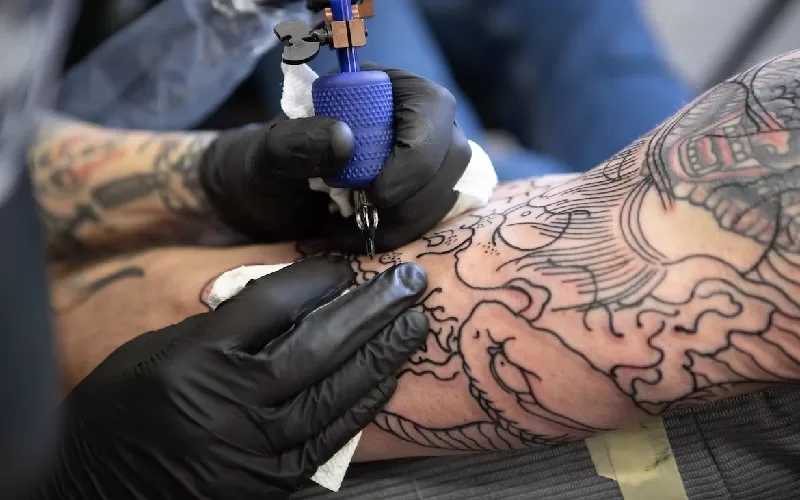
Tattoos are a popular form of body art, with millions of people worldwide getting inked each year. It is an intricate process that requires multiple sessions to get the desired results. But for many, these permanent designs can become a source of regret and embarrassment. Fortunately, tattoo removal treatment has come a long way and allows individuals to erase their tattoos without leaving behind any traces. But how many sessions will be needed, and what is the importance?
Can a Tattoo Be Removed in One Session?
Tattoos may be removed in a single session, but the results vary depending on several factors. The size, color, and location of the tattoo will affect how easily it can be removed. Additionally, newer tattoos are generally easier to remove than older ones.
In general, single-session removal is best suited for small tattoos with lighter shades of ink. Larger tattoos with darker colors may require multiple sessions to erase effectively.
How Many Sessions Does It Take To Remove a Tattoo?
On average, most people will need between two and five sessions for their tattoo removal treatment. However, this number could go up or down depending on the individual’s skin type and the complexity of the design being treated. Here are some of the things to keep in mind:
Size and location of the tattoo
The size of the tattoo will play a large role in determining how many sessions are needed for removal. Furthermore, tattoos located on parts of the body with thin skin or frequent movement (such as wrists and ankles) tend to be more difficult to remove.
Color of the tattoo
The color of the tattoo also affects its removal time.
- Black tattoos: Black tattoos are generally the easiest to remove and can be done in as little as two sessions.
- Colored tattoos: Coloured tattoos take longer to remove due to the complexity of the pigments. Depending on the design, they may require up to 10 sessions.
- Amateur tattoos vs professional tattoos: Amateur tattoos are easier to remove than professional ones since the ink is not as deep.
Age of the tattoo
The age of the tattoo also has a bearing on its removal time. Older tattoos are more difficult to remove since the ink has had more time to set into the skin.
Skin type and health
Your skin type and overall health can also affect the removal process. Individuals with darker skin tones may require more sessions than those with lighter complexions. Additionally, smokers and individuals with health conditions such as diabetes or HIV/AIDS tend to take longer to recover from tattoo removal treatments.
Type of Ink Applied
The type of ink used for the tattoo will also affect how long it takes to erase. Homemade or amateur inks are easier to remove, while professional tattoos require more sessions and deeper treatments.
Method of tattoo removal used
There are several methods for tattoo removal, the most popular ones being laser therapy and surgery. Laser treatments are more commonly used since they tend to be less painful and have fewer side effects than surgery.
Clinic selection and technology used
Clinic selection is also important. Not all clinics have the same level of experience or technology, so it’s best to do your research and find one with a good reputation and reliable equipment.
Scarring
When it comes to tattoo removal, it’s important to consider the possibility of scarring. Laser treatment has a lower risk of leaving behind scars, while surgery carries a higher risk.
It’s important to remember that each person will respond differently to treatment; some individuals may need more sessions than others. Some people may be able to see results after only two or three sessions. In contrast, others may need up to ten treatments before being completely satisfied with the results.
Will Laser Tattoo Removal Remove the Tattoo Completely?
Laser tattoo removal is one of the most popular methods available today. It uses a highly concentrated beam of light to target and break down the ink particles in the skin, gradually fading the tattoo over multiple sessions. This method is widely used due to its effectiveness and ability to reduce scarring.
In Singapore, many aesthetic clinics use advanced Pico Laser technology for tattoo removal. This state-of-the-art device is specially designed to deliver quick, accurate, and comfortable treatments with minimal risk of scarring.
The duration of each laser tattoo removal session will depend on a few factors, such as the size, location, color, and type of tattoo being removed. Generally, laser tattoo removal sessions can take anywhere from 10 minutes to an hour per session.
For small tattoos that use minimal amounts of ink, shorter sessions may be required. However, larger, more detailed tattoos may require longer sessions.
Importance of Understanding the Number of Sessions Needed for Tattoo Removal
It’s important to understand that the number of sessions needed for successful tattoo removal may vary depending on each individual. Factors such as skin type, age, health, and lifestyle can all affect the required sessions and recovery time.
It’s also important to remember that tattoos may always be partially removed, even with multiple laser treatments. However, they should significantly fade in appearance over time. Additionally, some clinics offer additional treatments, such as fractional resurfacing or topical creams, to help improve the overall look and feel of the skin after treatment.
Conclusion
Overall, laser tattoo removal is an effective way to reduce unwanted tattoos with minimal side effects. With the right care and treatment, it’s possible to reduce the appearance of a tattoo over several sessions. It’s important to discuss your options with a qualified professional to find the most advanced tattoo removal options before committing to any procedure so you can make an informed decision.
Leave a Reply